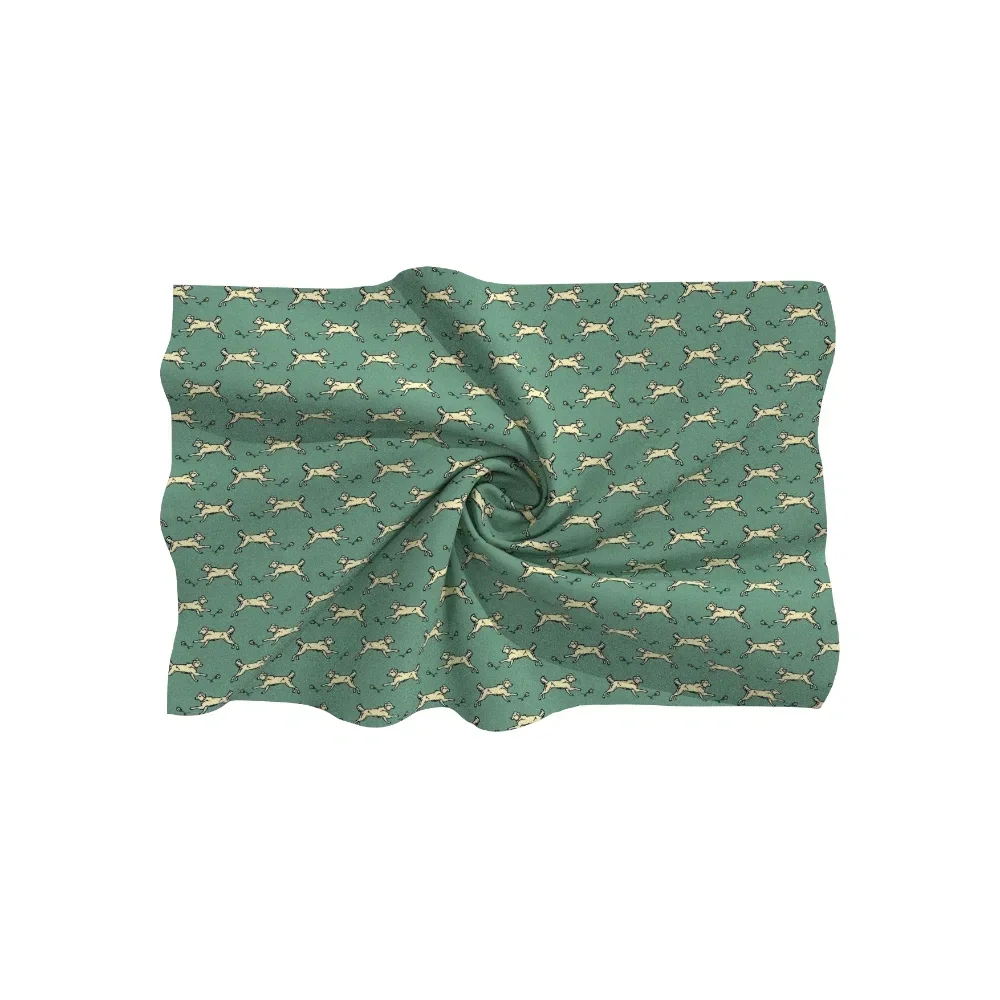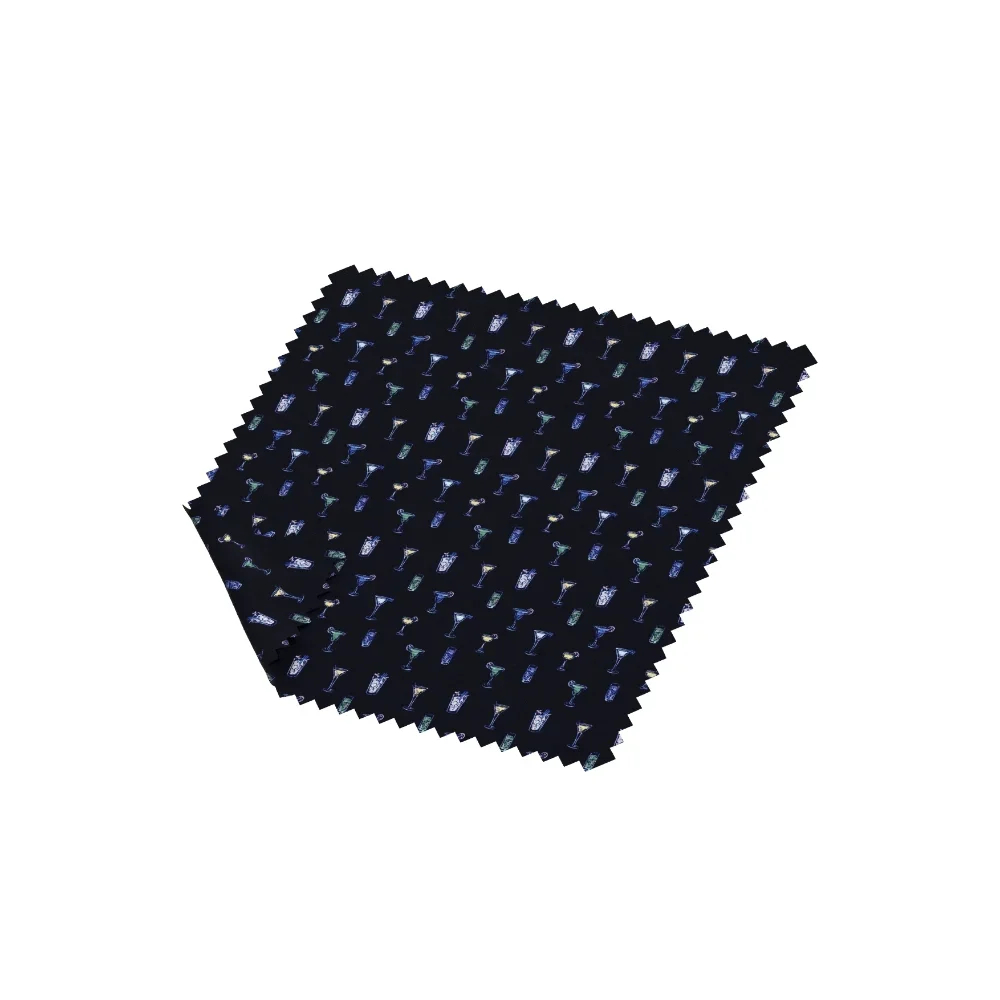In recent years, sustainable fashion has gained significant attention as consumers, designers, and manufacturers alike seek to reduce the environmental impact of the fashion industry. One of the key materials leading this shift is cotton print fabric. Known for its versatility, comfort, and natural origin, cotton is a fabric that aligns well with the principles of sustainability. Companies YaoHua, a leader in the production and development of cotton woven fabrics, cotton printed fabrics, and dyed fabrics, are playing a crucial role in advancing sustainable fashion through the use of high-quality, eco-friendly cotton textiles. In this article, we’ll explore the benefits of cotton print fabric and its role in the growing sustainable fashion movement.
What is Cotton Print Fabric?
Cotton print fabric is created by printing designs or patterns onto cotton fabric using various printing techniques. The cotton base provides a soft, breathable material that is ideal for fashion applications, while the print adds uniqueness and style. This fabric is widely used in clothing, home textiles, and accessories due to its comfort, ease of care, and aesthetic appeal.
Printing on cotton fabric can be achieved through several methods, such as screen printing, digital printing, or block printing. The choice of printing technique influences the environmental footprint of the fabric. In sustainable fashion, it’s essential to focus on eco-friendly dyes, water management, and energy-efficient printing technologies to ensure that cotton print fabrics contribute positively to sustainability.
The Environmental Benefits of Cotton Print Fabric
Cotton is often considered an environmentally friendly fabric compared to synthetic alternatives, especially when it is produced sustainably. Here are some of the environmental advantages of using cotton print fabric in fashion:
1. Renewable and Biodegradable
Cotton is a natural fiber derived from the cotton plant, making it both renewable and biodegradable. When cotton products reach the end of their lifecycle, they decompose naturally without leaving harmful microplastics behind, unlike synthetic fibers such as polyester. This makes cotton print fabric a much more sustainable option for fashion compared to materials that do not biodegrade.
2. Reduced Carbon Footprint (When Grown Sustainably)
When cotton is grown using sustainable practices, such as organic farming, it can have a significantly lower carbon footprint. Organic cotton farming avoids the use of synthetic pesticides and fertilizers, reducing soil and water pollution. This, in turn, contributes to healthier ecosystems and a reduced overall environmental impact.
3. Water Conservation
Sustainable cotton farming also emphasizes efficient water management. While cotton production traditionally requires large amounts of water, innovative techniques in water management and rain-fed irrigation are helping to reduce water consumption. Brands that focus on responsibly sourced cotton and incorporate water-saving technologies help contribute to the conservation of precious water resources.

The Role of YaoHua in Sustainable Cotton Fabric Production
YaoHua, a company renowned for its expertise in cotton woven fabrics, cotton printed fabrics, and dyed fabrics, is committed to driving sustainability in the textile industry. With a focus on both quality and eco-friendliness, YaoHua plays a key role in producing cotton textiles that meet the demands of modern, sustainable fashion.
1. Eco-Friendly Cotton Sourcing
YaoHua emphasizes sustainable sourcing by working with certified organic cotton farmers and promoting eco-friendly farming methods. Their commitment to responsible sourcing ensures that the cotton used in their fabrics has a minimal environmental impact, making their products an excellent choice for environmentally-conscious brands and consumers.
2. Sustainable Printing Techniques
At YaoHua, sustainable printing techniques are central to their production process. The company employs water-based dyes and eco-friendly inks that reduce the environmental impact of traditional printing methods. Additionally, YaoHua uses energy-efficient printing machines to reduce overall energy consumption during the production process.
3. Recycling and Waste Reduction
YaoHua is committed to minimizing fabric waste and utilizing efficient manufacturing processes. Any leftover material from production is either recycled or repurposed, ensuring that minimal waste is generated. This waste-reduction strategy aligns with the principles of the circular economy, helping to close the loop in the textile production process.
How Cotton Print Fabric Contributes to Sustainable Fashion
Cotton print fabric offers many advantages to designers and fashion brands who are focused on creating sustainable collections. Below are some key ways cotton print fabric contributes to the eco-conscious fashion movement:
1. Durability and Longevity
Cotton fabrics, including cotton print fabrics, are known for their durability and long lifespan. Clothing made from high-quality cotton fabric is less likely to wear out or lose its appearance after multiple washes. As a result, garments made from cotton print fabric can stay in circulation longer, reducing the need for frequent replacements and helping to combat the problem of fast fashion.
2. Versatility in Design and Application
One of the key features of cotton print fabric is its versatility in design. From bold floral prints to minimalistic patterns, cotton print fabrics can be adapted to meet various design styles and preferences. This makes cotton print fabric ideal for fashion brands looking to create diverse collections that cater to different tastes while still adhering to sustainable principles.
3. Comfort and Breathability
In addition to its sustainability, cotton is an incredibly comfortable material. Its natural fibers allow for breathability and moisture-wicking, making it an ideal choice for apparel that can be worn in all seasons. The softness of cotton print fabric adds to the comfort factor, making it a favorite for consumers who value both sustainability and comfort in their clothing choices.
4. Biodegradable Dyes and Inks
To further reduce the environmental impact, many sustainable fashion brands, including those using YaoHua fabrics, opt for biodegradable dyes and water-based printing methods. This ensures that the prints on cotton fabrics do not contribute to long-lasting pollution in water systems and that the fabric itself will naturally decompose without leaving harmful residues behind.

Conclusion: The Future of Cotton Print Fabric in Sustainable Fashion
As the fashion industry continues to evolve, there is a growing emphasis on creating more sustainable, eco-friendly products. The demand for organic and sustainably sourced cotton, as well as the use of eco-friendly dyes and printing techniques, is on the rise. With companies like YaoHua leading the way, the future of cotton print fabric in sustainable fashion looks promising.
The ongoing innovation in sustainable cotton farming practices, coupled with advancements in eco-conscious manufacturing technologies, ensures that cotton print fabric will remain a cornerstone of sustainable fashion. As consumer awareness increases and brands continue to prioritize environmental responsibility, cotton print fabric will continue to play a pivotal role in shaping a more sustainable future for fashion.
From Apparel to Upholstery: The Multifaceted Applications of Cotton Print Fabric


